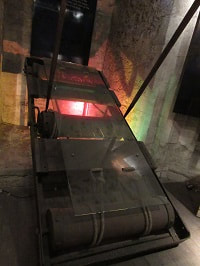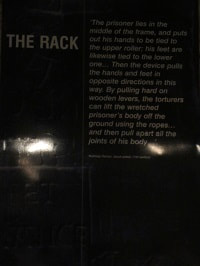 I pride myself on my work being as accurate as possible. The historical fantasy genre allows for a lot more creative freedom than does historical fiction, but that word “historical” is still there, and I want my work to ring true for readers. Thus, I try very hard to get the facts right. My heroines do a bit more independent wandering than would have been permitted for women of their respective times, and some of the described clothing is not entirely accurate to each period, but for that, I claim my “Fantasy!” license. Other things are exact. Moon phases, for example: I really wanted a full moon for Myrhiadh’s traipse up the turret stairs to Jae’s bedroom, but the date the action took place was a new moon, so I had to figure out how she was going to perform her stunt in the pitch black. I added a few candles in various locations to assist her. Scenes involving horses are accurate - I’ve been riding horses for more than three decades, and an author of historical stories must get the main form of transportation right. My dates jive, my details mesh. I go to great lengths to make sure that the minutiae are correct. Characters will sometimes get the details wrong - facts can get muddled over time, after all - but I know exactly what really happened, and the characters’ mistakes are entirely planned. Readers have been thrilled with The Curse of Caledon and how all the little details came together to connect the first five books. Things that had looked like loose ends all interwove and made sense. All carefully orchestrated from the beginning. So imagine my horror when I was researching the medieval torture instrument, the rack, and found a website that informed me that its first use was in 1447. I was planning a significant role for the rack in 779. That wasn’t the worst of it, however, since Guardians isn’t published yet, and I can change anything. The worst was that King Kerrion mentioned using the rack in Dragon’s Fire in 1218—and that book was published. Dismayed, I started figuring out how to make changes to the scene in Guardians that extensively involved the rack, intending to make at least one book right. In so doing, I discovered that the rack’s first use in Britain was in 1447. The device was used elsewhere long before that, even dating to BC usage. Ah, relief. Although Caledon is Celtic and modeled after the UK and Ireland, I can still claim “Fantasy!” for the presence of the rack 700 years before its first use in Britain. After all, Alexander the Great used it to torture a bunch of pages who were planning his assassination, so the knowledge and use of this marvelous invention might easily have reached my fictional land within 1000 years after that. Happily, I kept my rack and tortured my characters to my heart’s content. The rack was known as one of the most painful forms of medieval torture. I chose it because it was one of the less gruesome methods of torture that I researched. Rack Facts:
0 Comments
|
Archives
May 2024
EventsCheck out my interview with blogger Fiona Mcvie! https://wp.me/p3uv2y-75n
|
